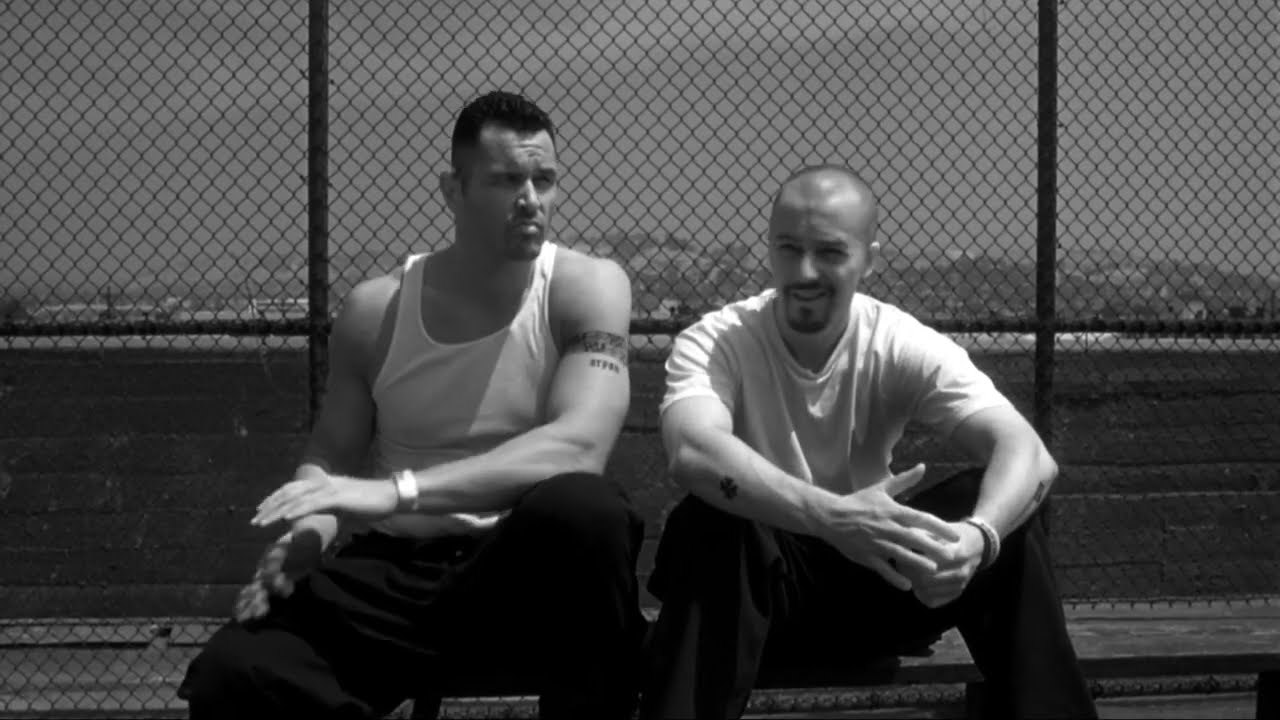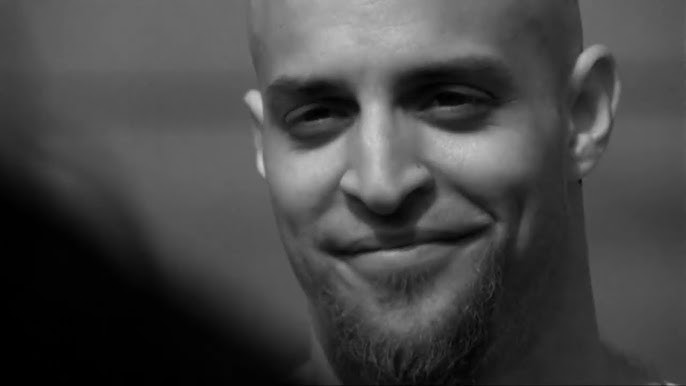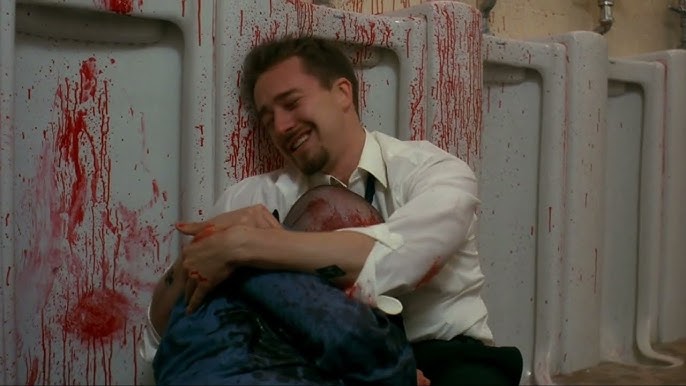🎬 American History X (1998)

🎬 American History X (1998)
Overview:
“American History X” (1998), directed by Tony Kaye, is a hard-hitting and emotionally charged drama that delves into the complexities of racism, redemption, and the cycle of hate. The film follows Derek Vinyard (Edward Norton), a former neo-Nazi skinhead who, after serving a prison sentence for the brutal murder of two black men, seeks to prevent his younger brother Danny (Edward Furlong) from following in his footsteps. As Derek undergoes a transformation in prison, where he encounters a series of events that challenge his deeply ingrained beliefs, he returns home, attempting to reconcile his past actions and guide Danny toward a more hopeful future.
The film is notable for its raw and unflinching portrayal of racism and the destructive effects it has on individuals and communities. The narrative structure, which alternates between past and present, provides viewers with a deeper understanding of Derek’s journey and the experiences that shaped his hateful views. “American History X” is not just a story about one man’s redemption, but also a broader examination of how hate can perpetuate itself through families, communities, and even generations. It’s a stark reminder of the power of change, and the impact of confronting one’s past to break free from cycles of violence and hatred.
Expectations:
Upon its release, “American History X” was met with high expectations, particularly given the intense subject matter and its powerful performances. Edward Norton, already an established talent by the late 1990s, was expected to deliver a standout performance, and he did not disappoint. The film’s exploration of racial tensions and the journey toward personal transformation was seen as ambitious and important, given the cultural climate at the time. Audiences anticipated a gripping narrative that would challenge their understanding of identity, racism, and the potential for redemption.
With the film’s focus on the psychology of hate, it was clear that it would tackle uncomfortable truths and demand reflection from its audience. The expectation was that “American History X” would not only entertain but also provoke thought, inspiring conversations about the real-world impact of racism and the possibility of overcoming it. Additionally, the controversial themes and unrelenting portrayal of violence and prejudice created a sense of anticipation, as viewers were curious to see how the film would balance its dark content with messages of hope and personal growth.
Review:
“American History X” is an uncompromising film that leaves a lasting impact. The film’s greatest strength lies in its performances, particularly Edward Norton’s portrayal of Derek Vinyard. His performance is nothing short of extraordinary, capturing the complexity of a man torn between his past beliefs and his desire for redemption. Norton’s transformation from a menacing figure steeped in hatred to a more introspective and remorseful man is both powerful and haunting. The way the film presents Derek’s internal conflict makes his eventual journey toward redemption feel both earned and heartbreaking.
Edward Furlong, as Danny, plays the younger brother with a sense of desperation and vulnerability. His relationship with Derek is at the heart of the film, and Furlong portrays the role of a young man struggling with his identity and the influence of his older brother’s past with raw emotion. The tension between the brothers, as Derek tries to protect Danny from following in his footsteps, creates an emotional core that drives much of the film. Their performances, coupled with the film’s compelling narrative structure, allow the audience to see not only the transformation of Derek but also the potential for change in those around him.
The film’s direction and cinematography are equally noteworthy. Tony Kaye uses stark, jarring visuals to reflect the harsh realities of the story. The flashbacks, which show Derek’s past as a member of a violent white supremacist group, are contrasted with present-day scenes of his attempts to rebuild his life. The black-and-white imagery of the flashbacks emphasizes the cold, brutal world that Derek inhabited, while the present-day sequences, shot in color, reflect the painful yet hopeful journey of his redemption. The visual contrasts mirror the internal transformation that Derek undergoes, adding an additional layer of storytelling.
The film’s exploration of the destructive power of racism is poignant and effective. It does not shy away from the realities of hate, showing how it seeps into every aspect of Derek’s life, from his family dynamics to his relationships with society. The scenes of violence, especially those depicting racial hatred, are tough to watch but necessary for understanding the depth of the issue at hand. The film refuses to glamorize or excuse Derek’s actions, presenting them as a product of deep-seated societal and personal pain. However, it also emphasizes that redemption is possible, showing that change can occur even for those who have committed unspeakable acts.
The supporting cast also delivers powerful performances, with standout roles from Beverly D’Angelo as Derek and Danny’s mother, and the late, great Avery Brooks as the wise and patient Dr. Sweeney. Dr. Sweeney’s role as a prison counselor who helps Derek confront his beliefs is integral to Derek’s transformation. Brooks’ calm, compassionate presence provides a counterbalance to the fiery, volatile Derek, offering a sense of hope that change is achievable, even for the most entrenched individuals. D’Angelo, as the mother who is caught between her sons’ opposing paths, brings a nuanced portrayal of a parent who loves her children but struggles to protect them from their own destructive impulses.
The film’s pacing is deliberate, allowing the audience to fully absorb the emotional weight of the story. The tension between past and present is expertly woven into the narrative, giving the film a sense of urgency as Derek’s past continues to haunt him while he struggles to create a better future. The film’s heavy themes are handled with care, and it never allows the audience to escape from the uncomfortable truths it presents. This unflinching approach to storytelling is what makes “American History X” such a powerful and thought-provoking film.
Rating:
“American History X” is a masterclass in storytelling and acting, offering a searing portrayal of the corrosive effects of racism and the long, difficult road to redemption. The performances, particularly Edward Norton’s, are among the best in his career, with a haunting portrayal of a man who must come to terms with his past and fight to break free from the cycle of hate that has consumed him. The film’s uncompromising approach to its themes, combined with its strong performances, makes it an unforgettable cinematic experience.
While difficult to watch at times due to its graphic content and brutal honesty, the film is an essential work that invites reflection on the nature of hate, the power of personal change, and the possibility of hope even in the darkest of circumstances. “American History X” is a timeless film that continues to resonate today, making it a must-see for anyone seeking to understand the impact of racism and the path to personal growth.
Rating: ⭐⭐⭐⭐⭐ (5/5)











